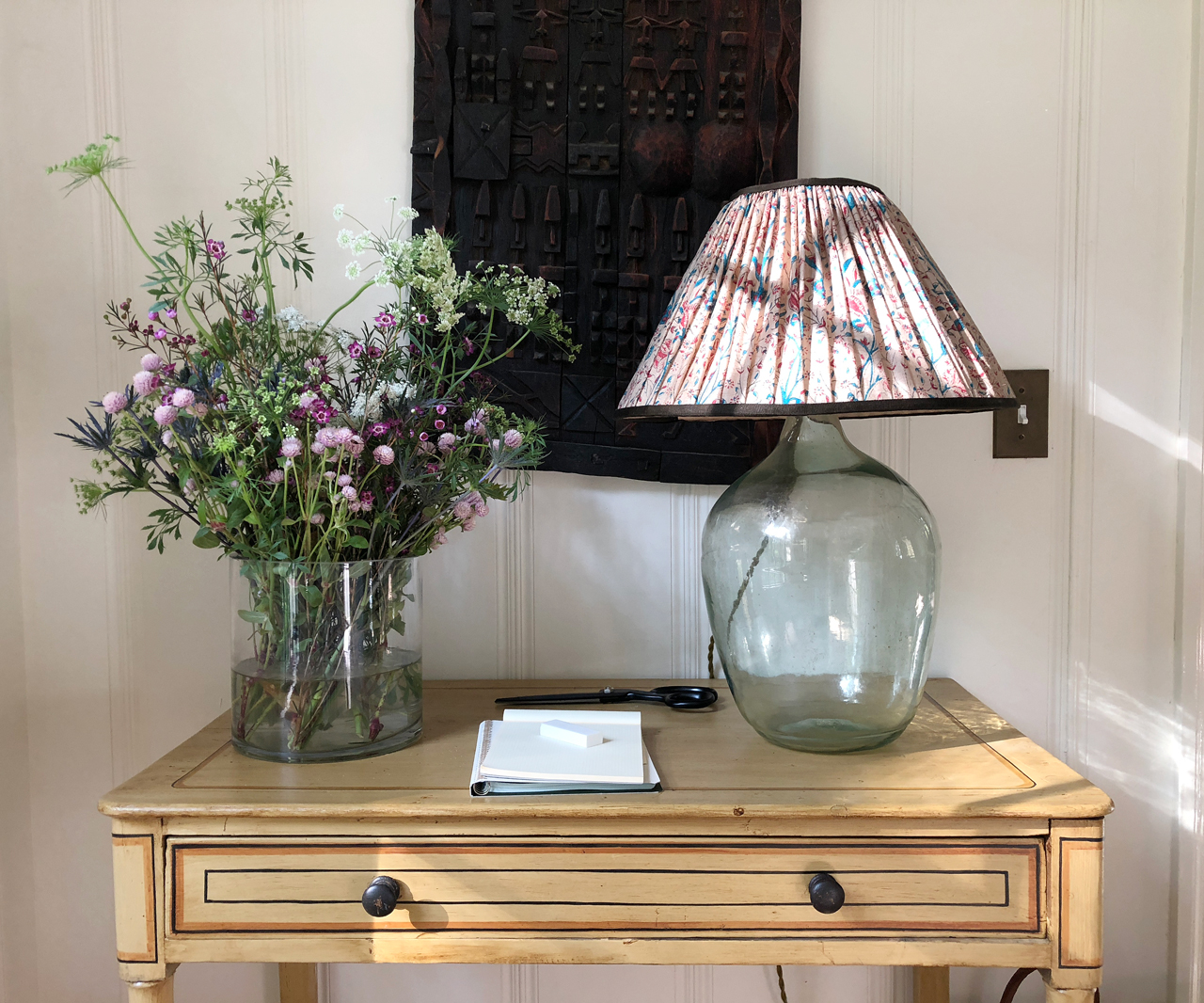I have always been happiest putting my hands to work, designing things and then making them.
After a couple of years in an office in New York, working for a non-profit devoted to historic preservation, I impulsively and without having a clue what I was doing bought a hundred-year-old printing press from a gentleman in Wisconsin, and had it moved to Boston, where I had just as impulsively, and without first telling my parents, signed a lease on an apartment with my college boyfriend, who I would eventually marry. In short order I set up a little letterpress print shop in our spare room in Beacon Hill, acquired another couple of tons of old printing equipment, moved through a series of studios in a wonderful converted industrial building in the South End, and over the years had my work for private clients published in a number of magazines.
Looking back on my printing days, I see now that while making this beautifully tactile paper, I was actually trying to get into the textile business, somehow. I had fallen hard for the simple calicos and exquisite palampores and chintzes that were printed in India in the 17th century for the French, English and Dutch markets and which found their way to the American colonies. Today they can be found in historic house museums all over New England, where I live.
I tried to recreate them and print them using my old printing presses, and for a few years it felt like a good way to connect these two things — printing and textiles — but then I had two babies, and fell head over heels for them, and out of love with printing.
It was clear that I would do something with old textiles and that I would put my hands to work somehow. There would have to be some utility in whatever I made, but I also wanted to make special things that are not that easy to come by. And then without thinking about it too much, I realized that there really is no better way to use and give new life to a delicate, old piece of silk or cotton than by turning it into a lampshade. They are beautiful objects, but useful, too, rarely touched and therefore protected.
In the same way that I bumbled through my first attempts at printing, I taught myself to make lampshades, having never sewn much of anything before. I feel so lucky to work with my hands, making beautiful, useful things. I hope you like them.
— Lis Herbert

what is a perrotine?
Naming this little lampshade workshop Perrotine was a nod to my print shop. The perrotine was a machine invented by Perrot of Rouen in the early 19th century to automate the process of block printing, and towards the end of my time as a letterpress printer I was essentially trying to turn my old Golding presses into perrotines, so that I could print fabric using the clanking cast iron that I loved. So there you have it: Perrotine.
a small, sort-of bio
I grew up in New York City in the 80s, where my memory tells me I divided my time between Central Park, especially the Ancient Playground, the two Mets — the museum and the opera — and Mimi’s Pizza on 84th and Lex. My family also shared a house in Connecticut with my grandparents, first on Lake Waramaug, and then up the hill in Kent, and some of my happiest memories are of tooling around Litchfield County with my mom. My family moved to the tiny town of Bronxville when I was in middle school, and from there, after high school, I went further north up Route 7 to Vermont, to Middlebury College. I spent a very happy semester in Paris, mostly cloistered at Sciences Po, but walking and inhaling every inch of the city when I wasn’t there. From college I went back to New York for a few years, then moved to Boston, then across the river to Cambridge, and now live in beautiful Lincoln, Massachusetts, where nearly half of the land is held in conservation, and where I finally learned to drive. When I am not making lampshades I am with my boys, or cooking, or fixing up my house, or volunteering in our very special town, or, whenever possible, busy with my hands in my garden.
in with the old
I hope that I can convince old sari lampshade lovers to find beauty in other old, slightly worn things, too.
Giving new life and utility to something old is a wonderful thing, especially since so much of what we are encouraged to consume is often so poorly made that it might as well be called landfill from the start. The cheap, new thing will always be expensive: to you, when you inevitably have to replace it, and to the earth, when it’s discarded.
Anything made with integrity that may simply need to be dusted off or mended will be worth the effort in the long run. Furniture and objects, certainly, but also clothing, house parts, and so on. We all, collectively, really must start recycling everything and anything that can be given a new life, using it until it’s truly ready to be tossed. And even then, you may find somebody who can use it.
Press
-
Financial Times
Cutter Brooks’ Christmas shop lands in west London
More -
Elle Decor
Rebecca Gardner’s Recipe for a Great Party? Booze, Music, a Sense of Humor—and a Wad of Cash
More -
Architectural Digest
Step Inside a Cozy Connecticut Home by AD100 Designer Stephen Sills
More




